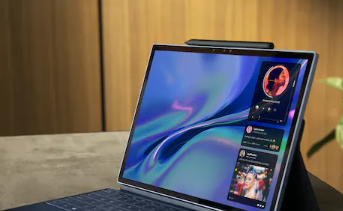Microsoft was absolutely right - more companies are adopting the form factor the Surface Pro is famous for
Microsoft was absolutely right - more companies are adopting the form factor the Surface Pro is famous for
If you've been following the laptop space for the past two or so years, you've probably noticed that detachable laptops are on the rise. Many high-profile models that were previously the traditional 2-in-1 (that is, an old-school-looking laptop that can also fold backwards) have slowly but surely transitioned to the detachable keyboard form factor.
It's not a new idea by any means - the Surface Pro has been a thing for years on end. But as more and more companies add form factors to their premium lines, it seems that the space in general is warming to the idea that Microsoft was absolutely right.
Recent examples include:
Dell's XPS 13 2-in-1, which was once one of the best traditional convertibles you can buy, has become a folio-style detachable this year.
Lenovo has pulled back on the convertible option in some ThinkPad lines in recent years. The new Z Series, for example, doesn't have a convertible option -- the company told me it considered adding one early in the planning process, but felt that the market for convertibles was much smaller than that of a clamshell. But now there are detachable ThinkPads (and the keyboard still has TrackPoint).
Asus's ExpertBook line has just received its first ever handheld detachable, the ExpertBook B3 Detachable.
Speaking of Dell - the Latitude Line, which has been known for being some of the best commercial convertibles, is now somewhat detachable as well.
I've asked a few companies about this decision over the past year, and all the answers are different than you might expect: Customers aren't really interested in a traditional 2-in-1. And as someone who's used a ton of them, it's not hard to see why.
advertisement
There are traits inherent in the laptop form factor - especially the direction it's headed these days - that run the opposite of what you'd expect from a good tablet. An example: weight. In general, laptops that are three pounds or more are heavy enough to be comfortably held and carried as a tablet. (I suspect this is part of the reason why the 15-inch convertible, which some companies were pushing for in late 2010, has been largely phased out.) There's also the fact that a convertible tablet form is intended in. Inserting often means holding the keyboard (which feels a bit awkward) or burying the keyboard in the ground (which can cause scratches and usually get dirty).
Bezels are also becoming an issue. Premium laptops are moving toward higher screen-to-body ratios, and smaller bezels have long been a key element, which many reviewers are willing to credit as a "modern" look. But good tablets need to retain some degree of bezel because people need something to hold onto, and grabbing (and blurring and potentially accidentally clicking) the usable portion of the tablet's screen is sub-optimal. is optimum.
For a long time, the 2-in-1 was a compromise: laptop-grade internals were tough to fit into tablets, and a full-size keyboard deck gave them a place to live. But as processors become more power-efficient and more companies adopt hybrid architectures, this is becoming less and less true. (I mean, come on, the M1 powers the iPad now.) And it's allowing companies to zero in on the reason that customers always prefer convertible laptops. It's not just a touchable screen, and it's not just tent mode. It's portability—and detachables—offer in a way convertibles can't.







fighterpunch.com
ReplyDelete